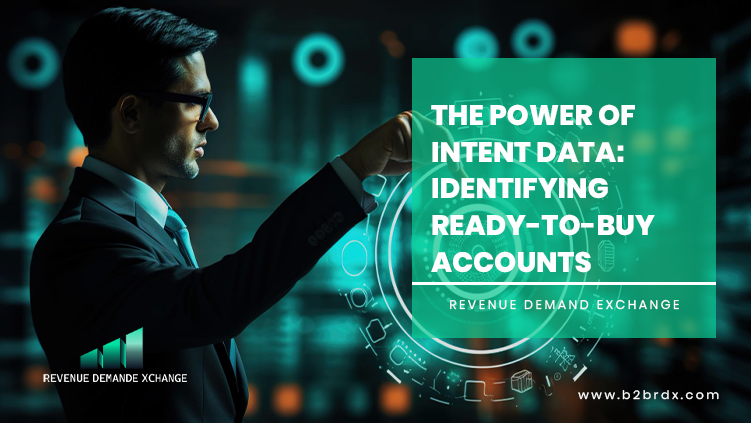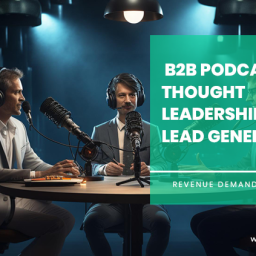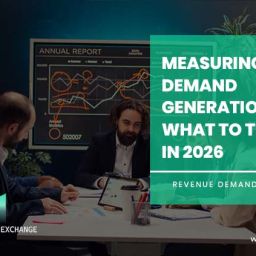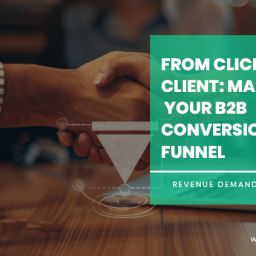The Power of Intent Data: Identifying Ready-to-Buy Accounts

In B2B marketing, one of the biggest challenges is identifying prospects who are actively researching solutions and are ready to buy. Traditional lead generation methods often rely on broad targeting or demographic data, which can result in wasted effort and missed opportunities. Intent data has emerged as a game-changing solution, providing insights into which accounts are showing purchase signals, what topics they are researching, and when they are most likely to convert. Leveraging intent data allows marketers to focus on high-value accounts, engage with the right prospects at the right time, and drive more efficient pipeline growth.
What Is Intent Data?
Intent data refers to behavioral information collected from multiple sources that signals a company’s interest in a particular product, service, or solution. This data can come from online searches, content consumption, social media engagement, third-party data providers, or website interactions. It helps marketers understand the topics, solutions, or vendors that prospects are actively researching. By analyzing patterns and trends, intent data enables companies to identify accounts showing buying signals and prioritize outreach to those most likely to convert.
How Intent Data Enhances Account-Based Marketing
Account-Based Marketing (ABM) focuses on targeting high-value accounts rather than individual leads. Intent data strengthens ABM by revealing which accounts are actively engaging with relevant content, products, or competitors. Instead of relying solely on firmographics or historical data, marketers can use intent insights to detect current interest and prioritize outreach. This approach ensures resources are focused on accounts with the highest propensity to purchase, increasing the efficiency of campaigns and improving conversion rates.
Identifying Ready-to-Buy Signals
Intent data helps pinpoint accounts that are most likely to convert by identifying specific signals. These can include frequent visits to product comparison pages, downloading solution-specific content, engaging with industry webinars, or mentioning relevant topics on social media. By tracking these behaviors, marketing and sales teams can separate passive leads from highly engaged prospects. Early identification of ready-to-buy accounts allows teams to deliver timely, personalized outreach, increasing the likelihood of closing deals faster.
Prioritizing High-Intent Accounts
Not all leads carry the same value or buying urgency. Intent data provides a scoring mechanism that ranks accounts based on their engagement level and relevance. High-intent accounts—those showing frequent research activity and clear interest in specific solutions—can be prioritized for sales outreach or targeted campaigns. This helps marketing teams allocate resources more effectively and ensures that sales conversations are focused on opportunities with the highest potential for revenue impact.
Aligning Sales and Marketing Efforts
Intent data fosters better alignment between sales and marketing teams. When marketing identifies accounts displaying strong purchase signals, it can pass them to sales with precise context about their research and interests. Sales teams can then tailor their outreach based on what the prospect is actively exploring, leading to more relevant conversations. This alignment reduces friction, shortens sales cycles, and increases the overall efficiency of lead-to-revenue processes.
Enhancing Personalization in Campaigns
Personalization is critical for effective B2B engagement. Intent data provides detailed insights into the topics, pain points, and solutions that matter to prospects. Marketers can leverage this information to create highly relevant email campaigns, targeted ads, and content offers that resonate with each account. Personalized campaigns driven by intent data not only capture attention but also build trust and credibility, resulting in higher engagement and conversion rates.
Optimizing Multi-Channel Outreach
Intent data can inform strategies across multiple channels, including email, social media, display advertising, and even direct outreach. By knowing which accounts are actively researching certain solutions, marketers can coordinate touchpoints across channels to reinforce messaging and increase visibility. For example, a prospect consuming content about a specific software solution may receive follow-up emails, targeted ads, and invitations to relevant webinars. This multi-channel approach ensures consistent engagement and strengthens the likelihood of conversion.
Measuring the Impact of Intent-Driven Campaigns
To understand the effectiveness of intent data, marketers need to track key performance metrics. These include engagement rates, lead-to-opportunity conversion, pipeline contribution, deal velocity, and revenue influenced by intent-driven campaigns. By analyzing these metrics, organizations can quantify the value of intent insights, refine targeting strategies, and optimize campaigns for better results. Continuous measurement ensures that intent data not only identifies ready-to-buy accounts but also drives measurable ROI.
Conclusion
Intent data has transformed B2B marketing by providing actionable insights into which accounts are actively researching solutions and ready to buy. By identifying high-intent prospects, prioritizing outreach, aligning sales and marketing efforts, and personalizing campaigns, organizations can focus on the opportunities with the highest potential for conversion. In 2026, intent-driven strategies will become increasingly essential as B2B buyers expect relevant, timely, and personalized engagement. Leveraging intent data effectively allows businesses to accelerate pipeline growth, improve conversion rates, and maximize marketing ROI, making it a cornerstone of modern demand generation.







